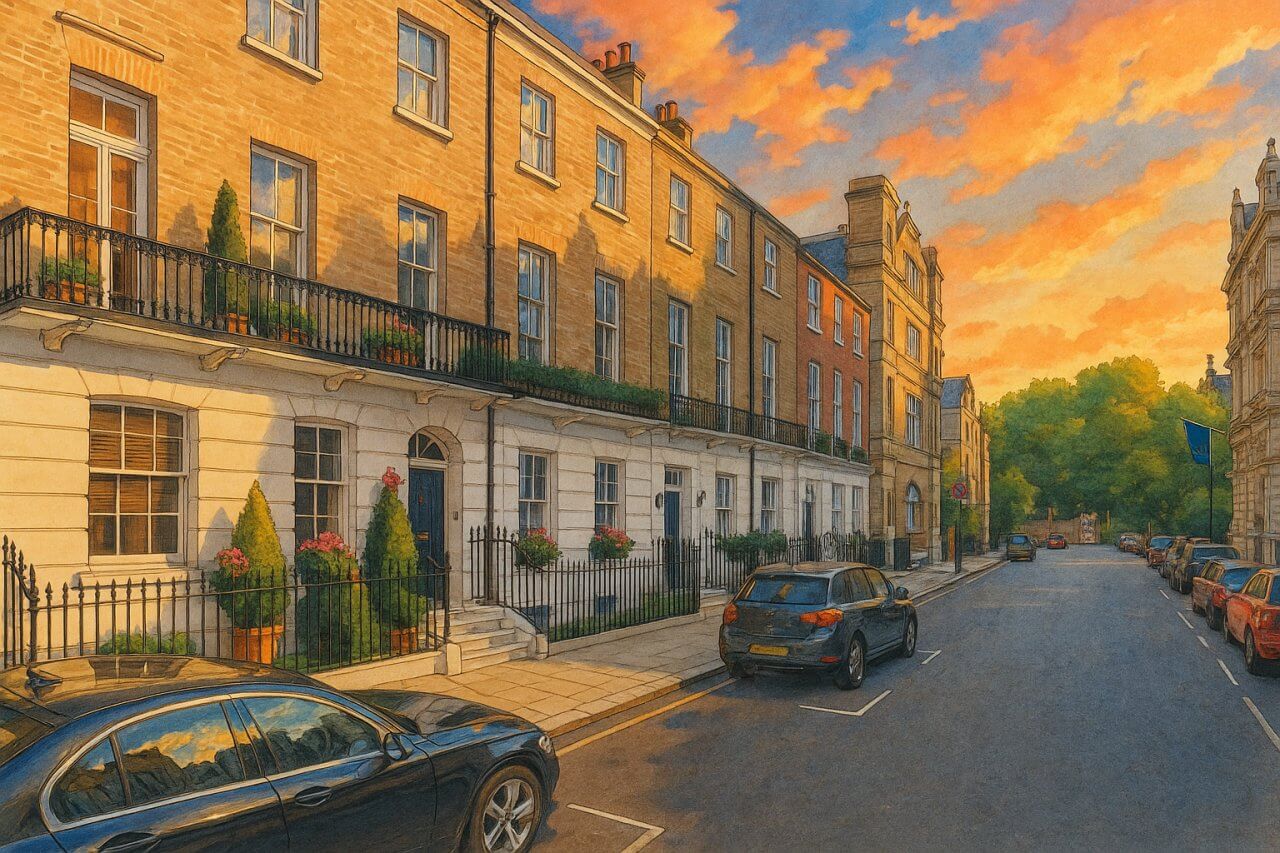
Chapel Street, London
Chapel Street is a short yet distinguished road located in the heart of Belgravia, within the City of Westminster, London. Known for its elegant Georgian townhouses and proximity to major landmarks, this street exemplifies the refined character of Belgravia and its status as one of London’s most prestigious neighbourhoods.
Location and Layout
Chapel Street connects the grand Belgrave Square to Grosvenor Place, forming a north–south corridor in one of the most sought-after areas of the capital. Measuring approximately 205 metres (672 feet) in length, the street runs with two-way traffic from Belgrave Square to Headfort Place. From there, it becomes a one-way street heading northeast to Grosvenor Place, easing the flow of vehicles in this tight residential zone.
History of Chapel Street
Chapel Street was laid out in the early 19th century during the major urban development of Belgravia, led by the Grosvenor Estate under the direction of master builder Thomas Cubitt. This transformation turned former marshland into a model of Neoclassical urban planning.
The name “Chapel Street” likely refers to a nearby place of worship or was simply chosen as part of the tradition of ecclesiastical naming in Belgravia, which includes nearby Wilton Crescent and Eaton Square. The pronunciation is straightforward: Chapel is pronounced ˈtʃæp.əl, phonetically rendered as /ˈtʃæp.əl/. 
Character and Atmosphere
Chapel Street is primarily residential, characterised by white stucco-fronted houses, traditional railings, and mature trees lining the pavements. The architecture follows a cohesive early 19th-century style, contributing to the visual harmony and exclusivity of the area. The street exudes a tranquil, upper-class charm, with minimal commercial intrusion, though some embassies and professional residences are discreetly located here.
Notable Landmarks and Nearby Attractions
While Chapel Street itself is largely residential, several notable attractions lie within close walking distance:
- Belgrave Square – A landmark garden square with embassies, statues, and historic architecture.
- Buckingham Palace – Just a 5-minute walk to the northeast via Grosvenor Place.
- Hyde Park Corner – A major junction and entrance to Hyde Park with several war memorials.
- The Goring Hotel – A historic luxury hotel located nearby on Beeston Place.
Real Estate and Property Values
Chapel Street properties are among the most expensive in London. As of April 2025, the average price for a freehold townhouse on this street ranges from £7 million to £12 million, depending on size, renovation status, and garden access. Most houses here offer between 2,500 and 5,000 sq ft (232 to 465 sq metres) of living space, often across five or six storeys.
Compared to the London average property price, which hovers around £530,000, Chapel Street reflects the ultra-prime segment of the market. These homes often feature high ceilings, original fireplaces, and luxury finishes, making them attractive to wealthy buyers from around the world.
Transport and Accessibility
Nearest Underground Stations
- Hyde Park Corner (Piccadilly Line) – approximately 7 minutes’ walk.
- Victoria (Victoria, District and Circle Lines) – approximately 10 minutes’ walk.
- Sloane Square (District and Circle Lines) – about 13 minutes’ walk to the southwest.
Bus Services
The nearest bus stops are found along Grosvenor Place and Buckingham Palace Road. Services from these stops include:
- Route 2 – to Marylebone and Norwood.
- Route 11 – connecting Fulham to Liverpool Street.
- Route 211 – toward Hammersmith and Waterloo.
Fun Fact
Chapel Street has attracted several notable residents over the years. Among the most famous is Margaret Thatcher, the former Prime Minister, who lived at No. 73 with her husband Denis before moving into 10 Downing Street in 1979. After her resignation in 1990, she returned to the same address until 1992. A blue plaque now commemorates her time there.
Quick Facts
- Location: Belgravia, City of Westminster
- Length: 205 metres (672 ft)
- Traffic Direction: Two-way from Belgrave Square to Headfort Place; one-way from Headfort Place to Grosvenor Place
- Nearest Tube Stations: Hyde Park Corner (Piccadilly), Victoria (Victoria, District, Circle), Sloane Square (District, Circle)
- Bus Routes Nearby: 2, 11, 211 from Grosvenor Place/Buckingham Palace Road
- Architectural Style: Georgian/Neoclassical townhouses
- Average Property Size: 2,500–5,000 sq ft (232–465 sq m)
- Property Prices (2025): £7M–£12M per townhouse
- Notable Resident: Margaret Thatcher, former UK Prime Minister
- Nearby Sights: Belgrave Square, Buckingham Palace, Hyde Park
- Pronunciation: ˈtʃæp.əl / /ˈtʃæp.əl/
Map of Chapel Street, London

Painting of Chapel Street, London (View image in full size)